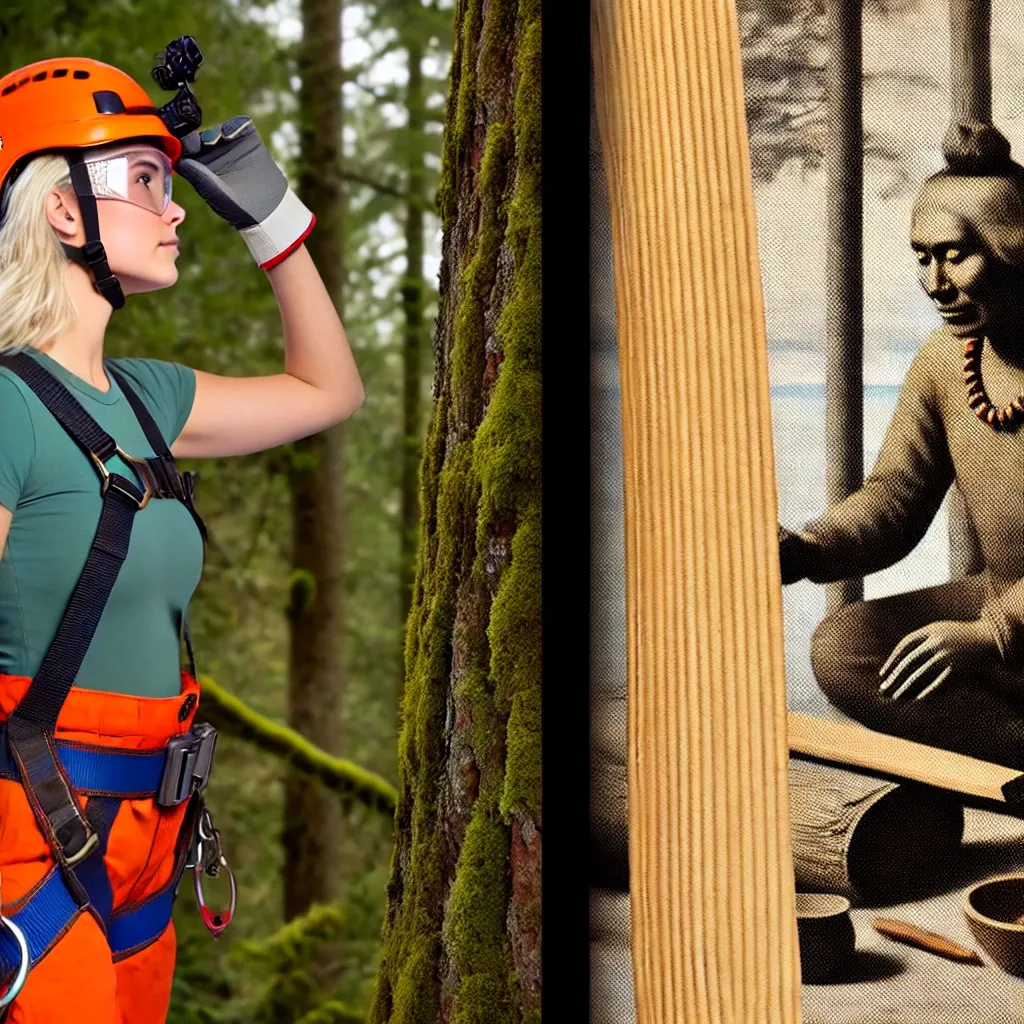
Douglas firs (Pseudotsuga menziesii) hold deep cultural, practical, and ecological significance for Indigenous peoples of the Pacific Northwest, where they have been used for thousands of years. These towering evergreens, which can grow over 300 feet tall, provided critical resources and were revered in local traditions. Due to their strength and durability, Indigenous communities used Douglas fir wood to build canoes, longhouses, and totem poles. The wood was also crafted into tools, cooking implements, and ceremonial objects.
Beyond its wood, Douglas fir provided important medicinal and nutritional resources. The tree's bark, rich in tannins, was used in remedies for ailments such as colds, respiratory issues, and skin irritations. Douglas fir pitch, or resin, was applied to wounds and infections for its antiseptic qualities and was even chewed to alleviate sore throats or toothaches. The needles, high in vitamin C, were used to make tea, a remedy for scurvy and an immune booster in winter months.
Douglas fir also plays a role in the ecosystem that Indigenous communities carefully manage. Its towering canopy offers shelter and promotes biodiversity by creating microenvironments beneath its branches. In this way, Douglas fir is integral not only to practical applications but also to the spiritual and ecological practices of Pacific Northwest peoples, who have long seen it as part of a reciprocal relationship with the land.
Krista Braathen Owner of Heartwood Tree Consulting
Contact: ksbraathen@gmail.com
Certified Arborist and Tree Risk Assessor
Tags: #Krista Braathen #Arborist #Tree Risk Assessor #Real Estate #Environment #Sustainability #Forest Health #Arborist Life #Pacific Northwest Forests #Sustainable Forestry #Tree Disease Management
